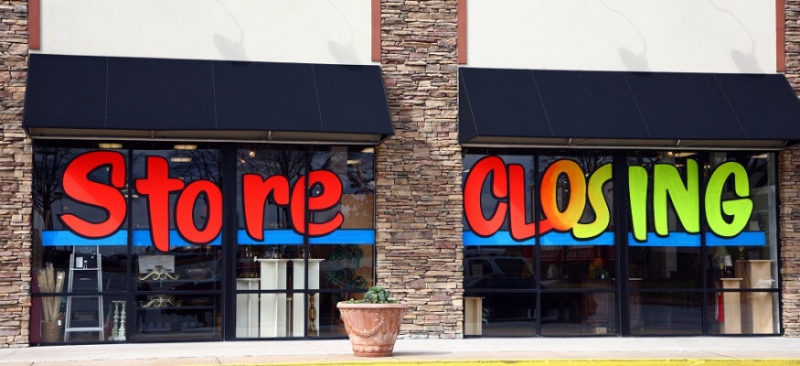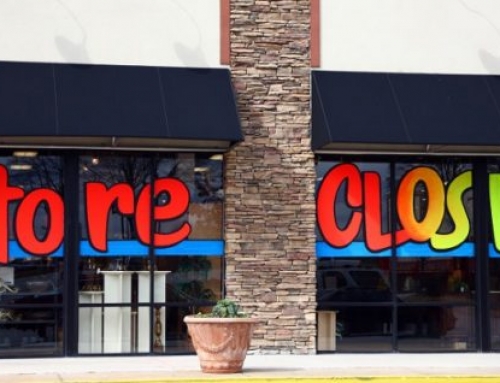Retail management without lease control management is like sailing in a storm but leaving the essential navigation tools at home.
How many of your global leases are about to expire this year and you missed the date to opt for an automatic extension or substantial renegotiation last year? How many leases would you have loved to leave last year, but overlooked the date for early contract termination? You have 100+ retail leases, total cost commitments for €50+ m (av. 5 yr leases, lease and personnel cost for the time of lease) and you leave the lease controlling to your expansion managers or to your legal department? You must be a very successful retailer, or you have a significant blind spot in your retail lease management.
Retail Conditions: Cloudy and Strong Wind Ahead. Store Closures Will Become a Regular Process
The global lifestyle brand market is under structural pressure and some brands got into stormy weather with their retail. Many of the well known international brands have launched a program to close a significant portion of their store portfolio.
Major Brand Store Closures Programs
| Puma | Mar 2013, Puma announces it is to close 90 China Stores |
| Coach | Jun 2014, board announces 70 of its 350 US Stores to close |
| Gerry Weber | May 2016, announces it is to close 100 European stores |
| Ralph Lauren | Jun 2016, 50 stores, 10% of its to retail fleet to close |
| Hugo Boss | Aug 2016 announce it is to close 20 stores |
| Tom Tailor | Oct 2016, board announces it is to close 300 stores of the group |
| Limited | Jan 2017, Limited announce they are to close 250 US stores |
| Abercrombie | Mar 2017, announces 60 more stores to close through 2017 |
For many brands, retail investments have brought the ship into a position of dangerous imbalance.
Some are struggling and are ameliorating their retail strategy. All of them are optimising their own retail portfolio and trying to renegotiate lease terms, seeking for early exits, relocations, or country exits. Store closures long before lease-end have become a regular process for retail expansion managers.
Unfortunately, it is only in times of stormy weather that many brands discover their lease contracts are long-term commitments in costs, a situation that may put the brand ship in a critical state.

Too many poorly perfoming stores bring a critical imbalance – how do you offload to save the ship? (Photo: Reuters)
It is only then when they realise there are significant benefits to an established and high quality retail lease management. Operating retail lease management processes in sunny times, gets you well prepared for crisis situations and the time when you might have to close more than just a handful of stores.
Step 1 Information Management: Get Your Full Set of Navigation Data
Having supported several retail restructuring processes and analysed small and large leasing and real estate portfolios, I have learnt that only a small share of companies are truly well organised in retail lease management.

Abercrombie’s Hong Kong Flagship store is up for early closure (Photo: Brand Pilots)
Retail lease management –especially under the current market conditions – is predominantly collecting and managing the full data picture on all stores. An excellent retail lease management prepares the fundamentals in sunny weather, to survive in stormy times. It is analysing and evaluating your lease contracts, even if there’s currently no intention to exit locations:
- What is your total remaining fixed lease obligation for all stores?
- What are the earnings/cash flow (…) of the store/portfolio over the fixed lease term?
- Are there contractual termination rights provided in the lease contracts?
- Is the shop under or overrented, compared to the current market level?
- What are the likely overall costs to exit a location?
- How is the P&L and balance sheet affected, if we close some of the stores?
Step 2 Develop a Strategy: The Weather Will Be Unpredictable, Develop Alternative Sailing Routes
When knocking on a landlord’s door and renegotiating a lease, often it is only the second time that both parties meet. In normal market environments this is acceptable, but obviously you have far better chances to re-negotiate your terms if you have done your relationship and leasing management during times of fair weather.
Expansion of retail growth is well managed by expansion experts. The restructuring of store portfolios needs different experts as well. Expansion managers are possibly not suitable to execute. Not that I would question the skills of your expansion manager, but the role they need to play in restructuring phases will destroy their reputation with landlords for future expansion. If an expansion manager is forced to play the ‘bad guy’ in restructuring, he will need years to rebuild relationships for new expansion when your restructuring is over.

Coach, one of the brands restructuring its retail portfolio (photo twitter)
Of course, in stormy weather the captain for restructuring is the retail manager himself. Cross functional company teams should offer support to quickly execute the ameliorated company strategy. The retail know-how has to be combined with leasing controlling data to provide a proper picture for the captain. This data and know-how interface is critical and time consuming as retail and often leasing develop their separate data worlds.
Step 3 Sailing in Stormy Weather – You Spend Several Million in a Few Months, Make Sure You Have it Under Control.
Sailing forward into the storm and deciding on the closure of stores within a few months, the crew has to make decisions about the strategy and its execution. Essential ingredients to successfully manage the course are:
- Clearly agreed closure objectives and defined restructuring of budgets
- A straight forward project management including a fast decision making process during the project
- A cross functional project team, that includes store closure experience. If not available in-house, recruit an external interim professional
- A strong project manager to lead the project, regardless of being a company member or an external manager
- A strong commitment and the reliable support of the board to stay on course
- A weekly progress report on the current status of negotiations and closures

Some brands went through major store closure programs more than once (Photo: Puma)
When major exits are decided, brands have a set-up of stores to close, but they’re lacking an overall exit strategy. It is somewhat surprising how often experienced executives expect landlords to simply collapse, if the ‘famous’ brand intends to return the lease earlier.
So restructuring teams often lack a plan B or negotiation tactics for their exit stores. Often store closure projects get the blues 2 months after the start, when it becomes clear, that many landlords simply resist to (re-) negotiate or demand for substantial payments to break the lease. This situation is predictable, so don’t make yourself dependent on one single exit plan. It can become very expensive. Prepare to sail alternative routes, have a plan B.
Step 4 Sailing Ahead – Conclusions
Your brand may have been lucky so far. You didn’t have to close 50+ stores in a year, and it doesn’t look that may happen in the next few months either.
But, remember, in today’s markets, storms are becoming normal. So, it is very smart to prepare for bad weather during fair weather conditions.

Organize advanced retail lease management and you avoid major restructurings (photo Mike Kalasnik)
A proper lease controlling strategy is an early portfolio management with a permanent ‘in’ and ‘out’ of locations, to provide a storm-resistant growth strategy.
Although lease contracts are often ‘off-balance’, there is a significant financial benefit to maintaining a complete and transparent overview of key lease figures at any time. So, prepare yourself with an enhanced lease control strategy for the next storm, while you still have the chance to do it.
〈Der Beitrag wurde zuerst am 23. März 2017 bei brand experts veröffentlicht und im Oktober 2017 überarbeitet.〉


